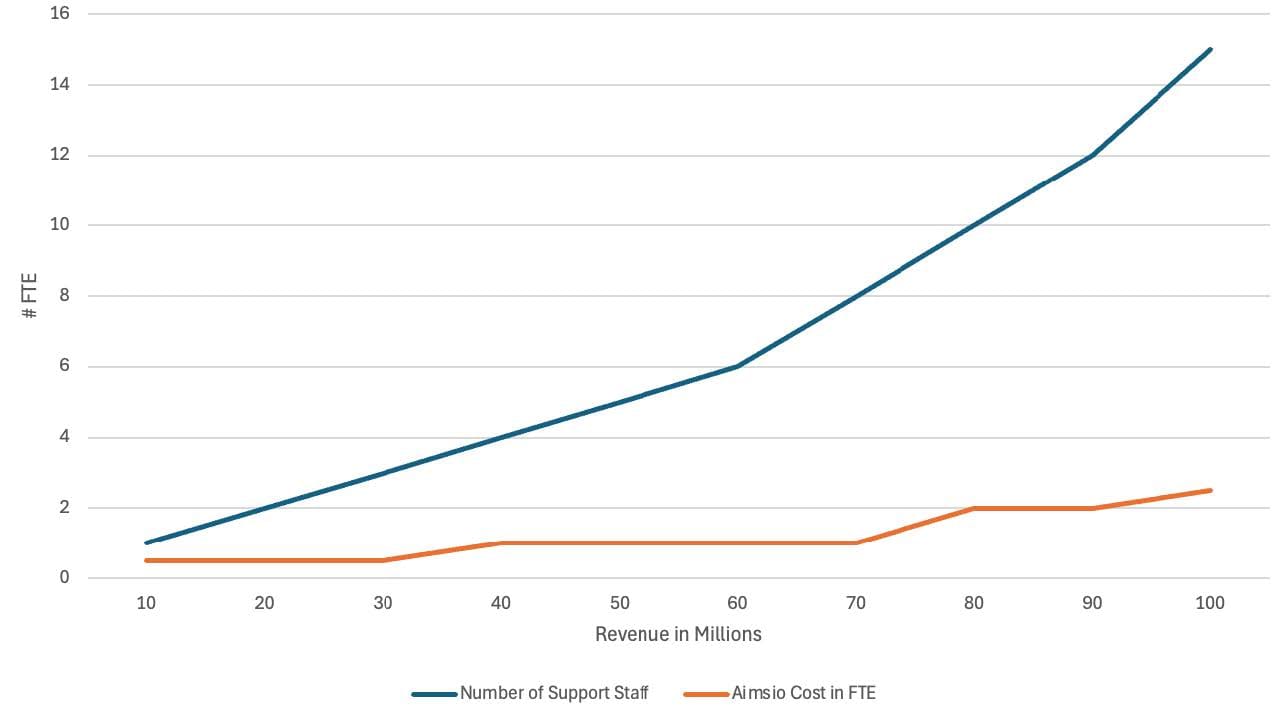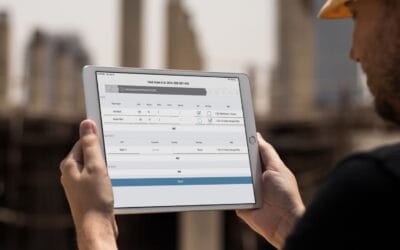You’re out there making it happen in construction, oil & gas, transportation, or energy. Long days, tough conditions, complex projects – and somewhere in the background, your field management software is either making your life easier or, in contrast, making it considerably more expensive than it should be.
Most of us don’t wake up thinking about our field service software costs. We’re focused on deliverables, client relationships, and putting out the inevitable fires that flare up on job sites. But that field service software bill? It might be silently eating away at your margins in ways you haven’t considered.
“How much should field management software actually cost?”
It’s a question we hear constantly from operations managers and executives alike. The answer depends on various factors, but one thing’s certain: if you’re experiencing any of these five warning signs, you might be paying more than necessary for your field service management platform.
1. The User Trap: Are You Penalized for Growth?
How many individuals on your team need access to your field service management platform? For many FSM providers, the answer directly translates to your monthly bill. The per-user pricing model, while seemingly straightforward for small teams, can become a significant financial burden as your company grows.
Consider this: A construction company initially deploys construction software for their core project management team of 20. As they take on larger projects, they need to grant access to site supervisors, foremen, equipment operators, and even subcontractors for real-time updates and task assignments. Suddenly, their user count balloons to 100, resulting in 5x the cost of their original commitment. This can force them to make the difficult decision between restricting access and hindering communication or absorbing the exorbitant price hike.
The smart alternative: Look for field service management platforms that offer more flexible pricing, such as a flat fee for unlimited users. This allows you to empower your entire workforce, from project managers in the office to every worker on the pipeline, without worrying about exponential cost increases as your projects and teams expand.
2. Beyond the Base Price: Are Essential Features Locked Behind Paywalls?
Many field service software companies lure you in with an attractive “base price” only to nickel and dime you for the features you actually need to run your business effectively. Essential functionalities like converting tickets to invoices, advanced reporting, or crucial integrations might be locked behind expensive add-ons or higher-tier plans.
Ask yourself: Does your “basic” jobsite software plan lack critical features that force you into costly upgrades? Imagine this – a transportation company uses digital field ticketing to track driver hours, mileage, and any special services rendered during a delivery. However, to actually bill the client, someone in the office has to manually compile this information and re-enter it into a separate system to create an invoice. This double-handling of data is time-consuming and prone to errors. If the base version of their field operations software lacks the ability to streamline this process, the true FSM software costs quickly adds up.
The smart alternative: Seek a field management software that offers a comprehensive suite of features right out of the box, providing a strong foundation for your operations. While customization and integrations are valuable, ensure the core functionality you need is readily available without breaking the bank.
3. Price Books That Don’t Break the Bank: Can Your Software Handle Your Diverse Client Needs?
For businesses in heavy industries, managing multiple clients often means dealing with a variety of pricing structures and rate sheets (price books). If your oil and gas software charges you for each additional price book you need to manage, scalability becomes a costly affair.
Here’s a common challenge: An energy company works with a diverse portfolio of commercial and industrial clients. Each client segment, and often individual clients within those segments, has unique pricing agreements for services like HVAC maintenance and electrical repairs. Their current field service management platform levies a charge for every distinct price book they need to maintain. As their client base expands, these accumulating FSM software costs erode their profit margins and create administrative burdens for managing numerous rate sheets.
The smart alternative: Opt for an oil and gas software that offers unlimited price book management. This allows you to handle complex pricing scenarios for all your clients without incurring extra fees, streamlining your billing and improving your profitability.
4. Complexity vs. Clarity: How Much is Inefficiency Costing You?
The most feature-rich jobsite software in the world is useless if your team finds it difficult to use. A complex platform can lead to lengthy training times, frustrated employees, expensive data entry errors, and ultimately, decreased productivity. The hidden cost here isn’t just the field service software subscription – it’s the lost time and inefficiency it creates.
Be honest: How long does it take to onboard new team members onto your current field operations platform? Imagine a field technician is dispatched to a remote site to address critical equipment malfunction. They struggle to navigate the complex interface of their FSM software to access the equipment history, find the correct diagnostic procedures, and log their work accurately. This delay not only prolongs the downtime of essential equipment but also increases operational costs and potentially impacts safety.
The smart alternative: Prioritize user-friendly field management software with an intuitive interface that also understands the realities of remote work. A well-designed platform, like one where digital field ticketing mimic familiar paper formats, can significantly reduce the learning curve, improve user adoption among field teams with varying levels of digital literacy, and boost overall efficiency, ensuring critical tasks are completed quickly and accurately.
5. The Cost of Being Stuck: Is Your Software Holding You Back?
Sometimes, the biggest cost of your current field management platform isn’t immediately apparent. It’s the limitations it imposes on your ability to adapt, integrate with other crucial systems, and ultimately grow your business. If your platform lacks the flexibility to evolve with your needs, you might find yourself stuck with outdated processes and missed opportunities.
Reflect on this: Does your current field management software easily integrate with your accounting, ERP, or other essential business tools? Can it be customized to fit your unique workflows? Does the provider offer ongoing support and updates?
The smart alternative: Choose a field service software that offers a balance of out-of-the-box functionality with the ability to integrate with your existing systems and adapt to your evolving needs. Look for providers committed to continuous improvement and responsive support.
Making the Smart Choice: Investing in Value, Not Just Features
Don’t just look at your monthly bill – evaluate the true cost of your field operations software on efficiency and your bottom line.
At Aimsio, we understand the unique challenges faced by the heavy industries. That’s why we’ve built a field management software built for the heavy industries, offering comprehensive features and a scalable FSM software pricing model without limitations on users or price books.
Book a personalized demo today and let us show you how Aimsio can be the strategic partner you need to optimize your field operations and boost your bottom line.
Aimsio is the all-in-one field-first, back-office-ready platform that helps commercial and industrial companies digitize their operations, eliminate paperwork, assign crews, track progress, and invoice with precision. From the oilfields to the interstate, we help field teams and finance teams perform with clarity, visibility, and confidence.
Field-First. Back Office-Ready. Transforming the Field.
FAQ
What red flags should I look out for when selecting field management software?
- Per-user pricing models
- Restricted feature access
- Limited integration capabilities
- Complex user interfaces
- Inflexible pricing structures
What key attributes should I look for in high-value field management software?
- Unlimited user access in field operations software so you can scale without penalty or complicated workarounds.
- The core functionality you need is included within your base field management software price.
- The platform should be designed to be easy to learn and use for all staff.
- Real-time visibility into data collected from digital field ticketing and the office.
- Regular platform updates that adapt to industry changes and user needs.
What percentage of revenue do companies typically spend on software and IT?
Industry benchmarks consistently show that software and IT expenditures typically represent 1-3% of a company’s total annual revenue.
For heavy industries like construction, oil & gas, and transportation, strategic field service software investments are crucial for maintaining competitive advantage. In this context, solutions like Aimsio offer exceptional value, with a minimal 0.2% surcharge that represents a fraction of the standard industry software allocation.
Comparative Perspective:
- Standard Industry IT Spending: 1-3% of revenue
- Aimsio’s Typical Cost Impact: Approximately 0.2% of ATV (annual transaction volume through the Aimsio platform)
This minimal investment can yield significant returns through improved operational efficiency, reduced administrative overhead, and enhanced field management capabilities.
How Does Field Management Software ROI Compare to Adding Staff?
When evaluating field service management platforms, many organizations face a critical decision point: invest in better software or simply add more administrative staff to manage existing processes.
While hiring provides specialized expertise and problem-solving capabilities, it comes with significant costs beyond the $60,000-$80,000 base salary. There’s benefits, training, and the fact that you’ll need even more people as you grow.
Traditional field operations software isn’t much better. Their per-user pricing means your FSM software costs balloon right alongside your headcount. Add 20 new team members? Watch your software bill double.
Aimsio’s approach fundamentally differs:
- Fixed base jobsite software pricing regardless of user count
- Minimal 0.2% surcharge only above specific transaction thresholds
- Cost impact grows at a fraction of the rate of adding administrative staff
As shown in our comparison graph, while administrative staff needs (blue line) climb steadily with revenue, Aimsio’s cost impact (orange line) barely rises. At $50 million in revenue, that’s the difference between hiring 5-6 more people or investing in field service software that costs less than one salary.

The optimal solution combines the right technology with strategic human expertise, but choosing field management software with transparent, growth-friendly pricing prevents unnecessary administrative bloat while helping your existing team work more efficiently.




